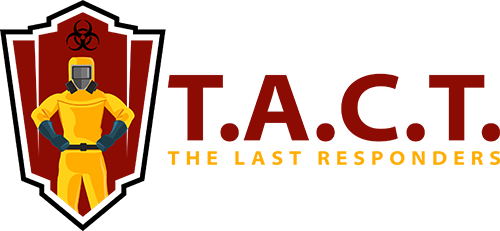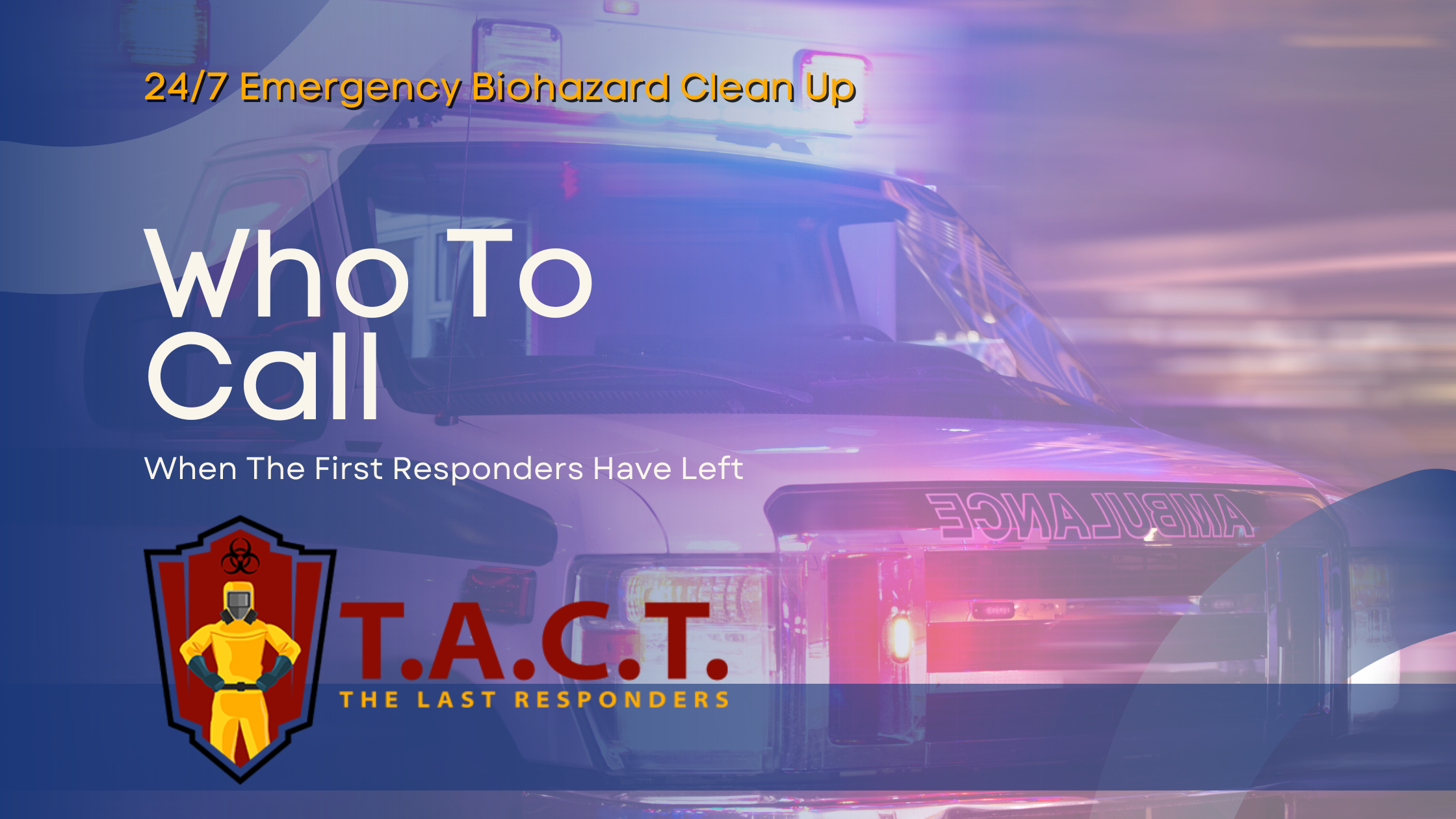A complete guide to professional Biohazard cleanup
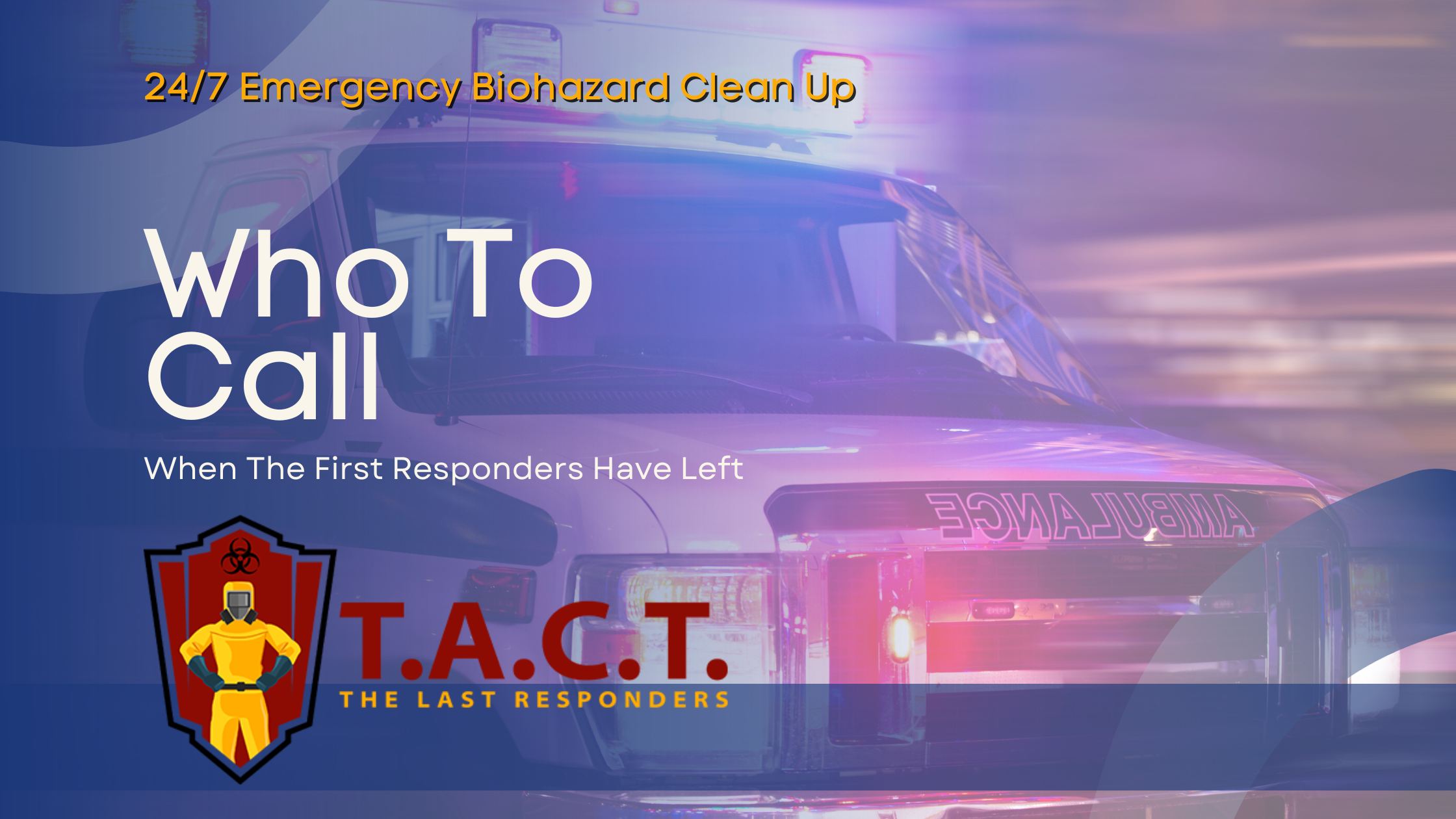
Cleaning Crime Scenes: A Complete Guide to Professional Biohazard Cleanup
When violent crime strikes, the aftermath extends far beyond the initial investigation. While law enforcement and forensics teams focus on gathering evidence, families and property owners face the daunting reality of restoring safety to contaminated spaces. With violent crimes occurring every 26.2 seconds in the United States, the demand for professional crime scene cleanup services continues to grow, creating opportunities for those willing to enter this specialized field.
Crime scene cleaning represents one of the most challenging yet essential services in public health and safety. Unlike regular janitorial work, this profession requires extensive training, specialized equipment, and the emotional resilience to handle traumatic situations while protecting both workers and the public from serious health risks.
This comprehensive guide explores every aspect of professional crime scene cleanup, from understanding the various types of scenes requiring remediation to the career requirements for entering this specialized industry. Whether you’re considering a career in biohazard removal, need to understand the cleanup process, or want to learn about industry standards, this guide provides the detailed information you need.
What is Crime Scene Cleaning?
Crime scene cleaning, also known as biohazard remediation or trauma scene cleanup, involves the specialized removal and disinfection of blood, bodily fluids, and other potentially infectious material from locations where traumatic events have occurred. This professional service goes far beyond regular cleaning, requiring trained technicians to safely handle hazardous biological materials while restoring properties to safe, habitable conditions.
The scope of crime scene cleaning extends to various incident types including homicides, suicides, accidental deaths, and unattended deaths. Each scenario presents unique challenges, from blood spatter patterns requiring systematic decontamination to decomposition cases involving extensive structural remediation. Professional crime scene cleaners must address not only visible contamination but also hidden biohazards that may have penetrated porous materials or spread through ventilation systems.

Statistics demonstrate the critical need for these services. The FBI reports that violent crimes occur every 26.2 seconds in the United States, creating a consistent demand for professional cleanup services. However, many people don’t realize that law enforcement agencies and emergency responders don’t provide cleanup services after completing their investigations. This responsibility falls to property owners, who often turn to certified crime scene cleanup companies for help.
The distinction between crime scene cleaning and regular janitorial services becomes clear when considering the hazardous material handling requirements. While standard cleaning focuses on dirt and grime removal, crime scene cleanup involves potentially infectious material that can transmit serious diseases. This specialization requires specific training, certification, and equipment that typical cleaning services don’t possess, making professional intervention essential for both safety and legal compliance.
Types of Crime Scenes Requiring Professional Cleanup
Different types of traumatic events create varying degrees of contamination and cleanup complexity. Understanding these distinctions helps property owners, families, and aspiring professionals appreciate the specialized skills required for each situation.
Homicide and violent crime scenes typically involve significant blood spatter and tissue contamination across multiple surfaces. These scenes often require extensive decontamination work, as blood can penetrate carpeting, seep into floorboards, and contaminate furniture beyond repair. Crime scene cleaners must systematically address each contaminated area while following protocols that prevent cross-contamination to unaffected spaces.
Suicide cleanup presents additional emotional challenges, requiring crime scene cleanup professionals to work with compassionate sensitivity while maintaining technical precision. These scenes may involve gunshot residue, tear gas from law enforcement response, or pharmaceutical contamination depending on the method involved. The cleanup process must address both biological hazards and chemical residues while supporting grieving families through an already traumatic experience.
Unattended death scenes represent some of the most complex cleanup challenges due to advanced decomposition and extensive biohazard contamination. These situations often involve significant structural damage as bodily fluids spread throughout flooring and walls. Professional teams must assess whether materials can be decontaminated or require complete removal and replacement, often coordinating with insurance companies and restoration contractors.
Methamphetamine lab cleanup involves toxic chemical residues and requires federal compliance with DEA guidelines for contaminated property remediation. These scenes combine drug manufacturing chemicals with potential violence, creating multi-hazard environments requiring specialized training beyond standard biohazard protocols. Cleanup teams must address both chemical contamination and any biological materials present from associated violence.
Accident scenes, including vehicle crashes and industrial incidents, may involve biological materials requiring professional cleanup when they occur on private property. While emergency responders handle initial safety concerns, property owners often need specialized services to address blood and tissue contamination that regular cleaning cannot safely manage.
Crime scene investigation residue removal includes cleaning up materials left behind by forensic teams, such as fingerprint powder, evidence chemicals, and luminol residue. While these materials aren’t typically hazardous, they require specialized knowledge to remove without damaging surfaces or leaving permanent stains.
Health Risks and Safety Concerns
The health risks associated with crime scene cleanup extend far beyond what most people realize, making professional intervention essential for protecting both workers and property occupants. Understanding these dangers highlights why specialized training and equipment are mandatory for anyone involved in cleaning crime scenes.
Bloodborne pathogen exposure represents the most serious immediate risk, with HIV, Hepatitis B, and Hepatitis C transmission potential from contact with contaminated blood and bodily fluids. These viruses can survive for extended periods on surfaces, with Hepatitis B remaining infectious for up to a week on dried blood. Professional cleanup protocols require treating all biological materials as potentially infectious, implementing universal precautions that assume the worst-case scenario for worker protection.
Bacterial and viral contamination from decomposing organic matter creates additional health hazards as natural decay processes produce dangerous pathogens. Advanced decomposition generates bacteria that can cause serious illness through skin contact or inhalation, while also attracting insects and vermin that may spread contamination to other areas. Professional teams use specialized equipment to contain these hazards and prevent their spread during the cleanup process.

Chemical exposure risks arise from illegal drug production sites and law enforcement response materials. Methamphetamine labs contain toxic substances that can cause respiratory damage, skin burns, and long-term health effects from prolonged exposure. Additionally, law enforcement may use tear gas or other chemical agents during incident response, creating secondary contamination requiring specialized neutralization procedures.
Respiratory hazards from airborne pathogens and toxic fumes require specialized breathing protection throughout the cleanup process. Decomposition releases ammonia, hydrogen sulfide, and other dangerous gases that can cause immediate harm or long-term respiratory damage. Professional crime scene cleaners use powered air-purifying respirators or self-contained breathing apparatus to maintain safe breathing conditions while working in contaminated environments.
Cross-contamination prevention becomes critical when dealing with multiple hazard types or when protecting unaffected areas of a property. Improper containment procedures can spread contamination throughout a building, creating much larger remediation challenges and exposing additional people to health risks. Professional protocols establish strict containment zones and decontamination procedures that prevent hazard migration during cleanup operations.
Regulatory Framework and Compliance
The crime scene cleanup industry operates under strict regulatory oversight designed to protect workers, the public, and the environment from hazardous material exposure. Understanding this regulatory framework is essential for both service providers and clients seeking legitimate, compliant cleanup services.
OSHA bloodborne pathogen standards form the foundation of worker protection requirements, mandating universal precautions and comprehensive employee protection protocols. These regulations require employers to provide proper training, personal protective equipment, and medical surveillance for workers exposed to potentially infectious materials. Compliance includes written exposure control plans, regular training updates, and detailed record-keeping for all potential exposure incidents.
EPA hazardous waste disposal regulations govern the transport and treatment of biohazard materials removed during cleanup operations. Crime scene waste typically qualifies as regulated medical waste, requiring specific packaging, labeling, and disposal procedures. Professional cleanup companies must track all waste from generation through final disposal, maintaining detailed manifests that document proper handling throughout the waste stream.
DOT requirements for transporting medical waste and infectious materials add another layer of regulatory compliance for crime scene cleanup operations. Transportation regulations specify container requirements, vehicle placarding, and driver training for hazardous material transport. Violations can result in significant penalties and legal liability, making compliance verification essential when selecting cleanup services.
State-specific licensing requirements vary significantly across jurisdictions, with states like California and Georgia implementing comprehensive regulatory programs for trauma and crime scene cleanup companies. These programs typically require business licensing, technician certification, insurance verification, and regular compliance inspections. Some states also mandate specific training hours and continuing education requirements for maintaining licenses.
The ANSI/IICRC S540 Standard for Trauma and Crime Scene Cleanup establishes industry best practices for professional remediation services. While not legally mandated in all jurisdictions, this standard provides the technical framework that most professional companies follow for quality assurance and liability protection. The standard covers everything from initial assessment procedures to final verification testing, creating a comprehensive guide for compliant operations.
Professional Training and Certification Requirements
Entering the crime scene cleanup profession requires extensive training and certification to ensure worker safety and service quality. The specialized nature of this work demands more than basic cleaning knowledge, requiring technical expertise in hazardous material handling, decontamination procedures, and regulatory compliance.
Trauma and Crime Scene Technician (TCST) certification, based on ANSI/IICRC S540 standards, represents the industry’s primary credential for professional competency. This certification program covers biological hazard recognition, proper cleaning procedures, waste disposal requirements, and safety protocols specific to trauma scene remediation. Candidates must complete comprehensive training programs and pass written examinations demonstrating their understanding of technical and regulatory requirements.
ABRA (American Bio Recovery Association) credentials provide additional industry recognition for crime scene cleanup professionals. This organization focuses on advancing industry standards and providing ongoing education opportunities for members. ABRA certification demonstrates commitment to professional development and adherence to evolving best practices in biohazard remediation.

Hazmat training covering chemical handling and personal protective equipment usage is mandatory for anyone working with potentially dangerous substances. This training teaches workers how to properly select, use, and maintain protective equipment while working in contaminated environments. Programs cover different levels of protection, from basic PPE for minor exposures to Level A suits for maximum hazard conditions.
Medical Waste Transportation permits are required for legal biohazard disposal and transport. These permits ensure that cleanup companies understand proper packaging, labeling, and transport requirements for infectious materials. Training covers DOT regulations, waste classification systems, and emergency response procedures for transport incidents.
Ongoing education requirements and certification renewal processes ensure that professionals stay current with evolving regulations and best practices. Most certification programs require annual continuing education credits and periodic recertification examinations. This ongoing training addresses new technologies, updated regulations, and lessons learned from industry experience.
Training programs typically include hands-on exercises that simulate real cleanup scenarios, allowing students to practice procedures in controlled environments before working actual crime scenes. These exercises cover everything from initial scene assessment to final verification testing, ensuring graduates understand the complete cleanup process.
Essential Equipment and Personal Protective Equipment
Professional crime scene cleanup requires specialized equipment designed to protect workers while effectively removing biological and chemical hazards. The complexity and variety of equipment needed reflects the serious nature of contamination risks present at trauma scenes.
Level A hazmat suits provide the highest level of protection against chemical and biological exposure, featuring fully encapsulated design with supplied air systems. These suits are necessary when dealing with unknown chemical hazards or when working in severely contaminated environments where skin contact could result in serious harm. The suits include integrated gloves and boots, creating a complete barrier between the worker and potential hazards.
Respiratory protection equipment varies based on hazard assessment, ranging from powered air-purifying respirators for biological contamination to self-contained breathing apparatus (SCBA) units for chemical hazards. Professional teams must conduct air monitoring to determine appropriate respiratory protection levels and ensure equipment provides adequate safety margins for specific conditions encountered.
Specialized cleaning chemicals include blood solvents designed to break down protein-based stains, hospital-grade disinfectants that eliminate pathogens, and odor neutralizers that address decomposition smells. These products require specific application procedures and dwell times to achieve effective decontamination. Professional-grade chemicals are significantly stronger than consumer products and require proper training for safe handling.
Single-use tools and equipment ensure that contaminated items don’t spread hazards to other locations or future cleanup jobs. This includes disposable cleaning supplies, protective clothing, and specialized tools that are discarded after each use. The cost of disposable equipment is significant but necessary for preventing cross-contamination between different cleanup sites.

Heavy-duty transportation vehicles accommodate contaminated furniture and structural materials requiring removal from cleanup sites. These vehicles must meet DOT requirements for hazardous material transport and include features like leak-proof floors, proper ventilation, and emergency equipment. Professional companies invest in specialized vehicles that can handle large volumes of contaminated materials safely.
Advanced detection equipment helps identify hidden contamination that might not be visible to the naked eye. This includes ATP testing devices that detect biological contamination, UV lights that reveal bodily fluids, and air monitoring equipment that identifies chemical hazards. These tools ensure thorough cleanup and provide verification that decontamination efforts have been successful.
Professional Cleaning Process and Procedures
The crime scene cleanup process follows systematic procedures designed to ensure complete decontamination while protecting workers and preventing contamination spread. Each step builds upon the previous one, creating a comprehensive approach that addresses both visible and hidden hazards.
Initial scene assessment and contamination mapping must occur before cleanup begins, allowing teams to develop appropriate work plans and safety protocols. This assessment identifies all contaminated areas, evaluates structural damage, and determines what materials can be cleaned versus those requiring disposal. Teams document their findings with photographs and detailed notes that support insurance claims and demonstrate compliance with cleanup standards.
Containment setup prevents cross-contamination to unaffected areas through physical barriers and negative air pressure systems. Professional teams establish clearly defined work zones, including contaminated areas, decontamination zones, and clean areas where workers can safely remove protective equipment. Air scrubbers and filtration systems maintain proper air pressure relationships that prevent contaminated air from spreading to clean areas.
Biohazard cleanup involves systematic removal of visible biological materials and contaminated porous surfaces follows established protocols that minimize worker exposure while ensuring complete hazard elimination. Teams work methodically through contaminated areas, removing materials that cannot be adequately decontaminated and carefully cleaning surfaces that can be restored. This process requires attention to detail and understanding of how different materials absorb and retain biological contamination.
Multi-stage disinfection processes use EPA-approved chemicals and verification testing to ensure complete pathogen elimination. Professional protocols require specific contact times for disinfectants to achieve the required 6-log kill standard, eliminating 99.9999% of pathogens present. Teams apply disinfectants multiple times and use ATP testing to verify that biological contamination has been eliminated to safe levels.

Final inspection and clearance testing confirm that complete decontamination has been achieved before releasing the property back to owners. This includes visual inspection, air quality testing, and surface sampling to verify that no hazardous materials remain. Professional companies provide written certification of cleanup completion, documenting that the property meets safety standards for reoccupation.
Proper documentation for insurance claims and regulatory compliance requires detailed records of all cleanup activities, materials removed, and verification testing results. This paperwork supports insurance reimbursement and demonstrates compliance with regulatory requirements. Professional companies maintain comprehensive records that protect both themselves and their clients from potential legal issues.
Career Requirements and Qualifications
Entering the crime scene cleanup profession requires specific qualifications and personal characteristics that ensure both technical competency and emotional resilience. The demanding nature of this work means that not everyone is suited for a career in biohazard remediation, making careful consideration of requirements essential.
A high school diploma or GED represents the minimum educational requirement for most entry-level positions in crime scene cleanup. While advanced education isn’t typically required, additional training in biology, chemistry, or related fields can be beneficial for understanding the scientific principles behind decontamination procedures. Many professionals enter the field through specialized training programs rather than traditional educational pathways.
Physical fitness requirements include the ability to lift heavy loads and work extended hours in challenging conditions. Crime scene cleaners routinely handle contaminated furniture, building materials, and equipment that may weigh 50 pounds or more. The job also requires standing, kneeling, and working in confined spaces while wearing heavy protective equipment that can be physically exhausting over long periods.
Emotional resilience and compassion are critical for dealing with traumatic situations and supporting affected families. Workers regularly encounter scenes of violence, death, and human tragedy that can be psychologically challenging. Successful professionals develop coping strategies and maintain empathy for clients while protecting their own mental health through proper support systems and self-care practices.
Background checks and drug testing are standard requirements for client safety and trust. Crime scene cleanup companies work in private homes and businesses, often handling valuable property and sensitive information. Clean criminal records and drug-free status help ensure that clients can trust cleanup teams with access to their properties during vulnerable times.
Attention to detail and safety consciousness ensure thorough decontamination work that protects both workers and property occupants. Small oversights in cleanup procedures can result in continued contamination or health risks, making careful, methodical work essential. Professionals must consistently follow safety protocols even when working under pressure or in emotionally challenging situations.
Strong communication skills help when dealing with clients, insurance representatives, and regulatory officials. Crime scene cleaners often serve as the primary point of contact for families during traumatic times, requiring sensitivity and clear explanation of cleanup procedures. Professional communication also supports proper documentation and regulatory compliance throughout the cleanup process.
Industry Standards and Insurance Considerations
The crime scene cleanup industry operates within a framework of professional standards and insurance requirements that protect both service providers and clients. Understanding these considerations helps ensure quality service delivery and appropriate risk management for all parties involved.
Liability insurance requirements protect both companies and clients from contamination risks and potential exposure incidents. Professional cleanup companies typically carry substantial general liability coverage, often exceeding $1 million per occurrence, to address potential claims related to inadequate cleanup or worker exposure incidents. This coverage provides financial protection for companies while ensuring that clients have recourse if problems arise.
Pollution liability coverage addresses hazardous material incidents that might occur during or after cleanup operations. This specialized insurance protects against environmental contamination claims and covers costs associated with improper waste disposal or accidental release of hazardous materials. Professional companies invest in comprehensive coverage that addresses the unique risks associated with biohazard handling.
Homeowner insurance coverage options for crime scene cleanup costs vary significantly between policies and insurance companies. Many standard homeowner policies exclude crime-related damage, while others may provide limited coverage for cleanup costs. Property owners should review their policies carefully and consider supplemental coverage if they live in high-crime areas or operate businesses that might face increased risk.
The industry employs thousands of professionals across the United States, with hazardous material removal workers earning an average salary of $45,270 per year according to 2019 Bureau of Labor Statistics data. Experienced crime scene cleaners and company owners can earn significantly more, particularly in areas with high demand for services. The specialized nature of the work and required certifications support higher wages than general cleaning positions.
An 8% job growth projection from 2019 to 2029 for hazardous material cleaning occupations reflects increasing demand for specialized cleanup services. This growth stems from several factors, including increased awareness of health risks, stricter regulatory requirements, and growing acceptance of professional cleanup services rather than family-based cleanup efforts.
Professional organizations like ABRA and IICRC provide industry standards and support professional development through continuing education programs. These organizations establish best practices, offer certification programs, and advocate for appropriate regulation that protects both workers and the public. Membership in professional organizations demonstrates commitment to industry standards and ongoing professional development.
Career Aspect | Details |
|---|---|
Average Salary | $45,270 per year (BLS 2019) |
Job Growth | 8% projected growth 2019-2029 |
Education Required | High school diploma/GED minimum |
Certification | TCST, ABRA credentials recommended |
Physical Requirements | Ability to lift heavy loads, extended work hours |
Background Checks | Required for client safety and trust |
Quality assurance programs help companies maintain consistent service standards and regulatory compliance across all cleanup projects. These programs include regular training updates, equipment maintenance schedules, and performance monitoring systems that ensure crews meet established standards. Professional companies invest in quality systems that protect their reputation and provide consistent value to clients.
The crime scene cleanup industry continues evolving with new technologies, updated regulations, and changing client expectations. Companies that stay current with industry developments and maintain high professional standards position themselves for success in this specialized market. This includes investing in advanced equipment, providing ongoing training for employees, and maintaining strong relationships with regulatory agencies and industry organizations.
Professional crime scene cleanup represents a critical service that combines technical expertise, regulatory compliance, and human compassion. The industry offers career opportunities for individuals willing to undergo specialized training and meet the physical and emotional demands of this challenging work. For those considering this career path, focus on obtaining proper certifications, developing necessary skills, and connecting with established companies that prioritize safety and professionalism.
Whether you’re exploring career options, need cleanup services, or simply want to understand this specialized industry, remember that professional crime scene cleanup requires expertise that goes far beyond regular cleaning. The health risks, regulatory requirements, and emotional challenges involved make professional intervention essential for protecting everyone involved while restoring safety to affected properties.
Latest news
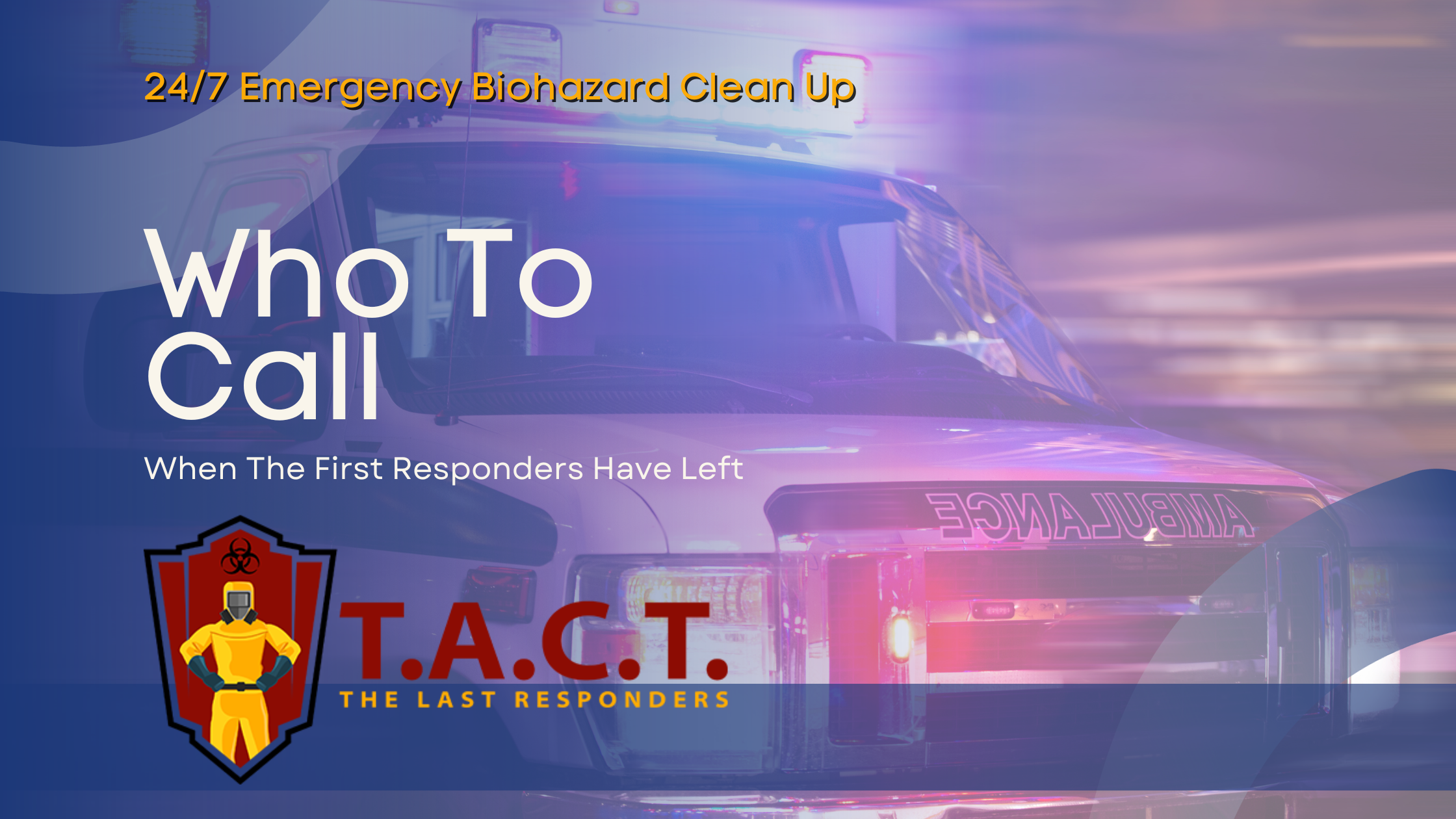
Bio Cleaning Services
Read More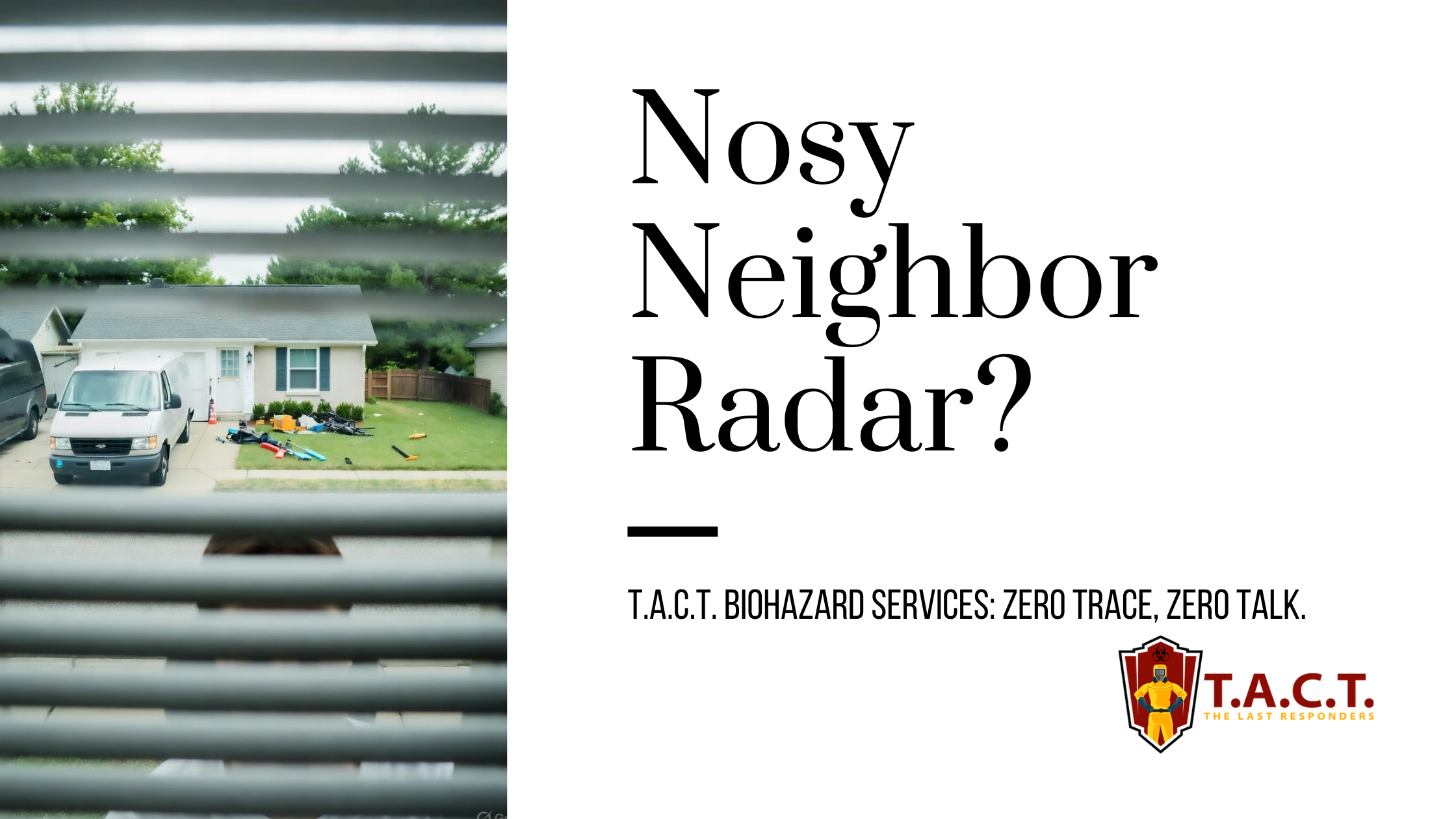
Nosy neighbors peeking? T.A.C.T. North Atlanta offers discreet biohazard remediation for rodent infestations, mold, hoarding, and more. Unmarked vehicles, quiet experts, full privacy—24/7 service at 470-781-4775.
Read More